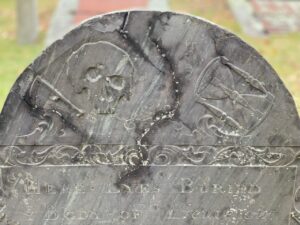 “May you live in interesting times” is supposed to be a curse – it’s certainly an exhausting way to go through life. As 2021 rolls over to 2022, here is a look back at 2021 in Vita Brevis:
“May you live in interesting times” is supposed to be a curse – it’s certainly an exhausting way to go through life. As 2021 rolls over to 2022, here is a look back at 2021 in Vita Brevis:
In January, Ann Lawthers urged genealogists visiting cemeteries to apply some of the insights garnered from their research, in this case about how the changing cultural norms around death translated into stone:
“There are substantial differences in the markers of the colonial period and the stones of later centuries. The earliest grave markers were the simple wooden cross or a piece of field stone. When the first carved headstones were created, they were made of stone that was both local and easily quarried and carved. So slate, sandstone, limestone, and even soapstone were typical materials. The stones were placed at the head of the deceased and the grave was oriented east to west so that at the Last Judgment, the deceased could sit up and face the East.
“Early markers, particularly Puritan New England markers, showed a Death’s Head with wings and an empty triangular nose where flesh and cartilage had rotted away. Puritans were fearful of death, as there was no guarantee that God would forgive their sins after death and welcome them to heaven. Puritans also did not believe in making any lifelike representation of the divine, hence the unlifelike skull adorning the grave markers. Beginning about 1690, however, the cherub face begins to appear in place of the skull on grave markers. The cherub design is clearly a recognizable human face and the wings on this design represent the soul’s ascension to heaven.
“By the eighteenth century, grave markers became taller and new shapes appeared…”
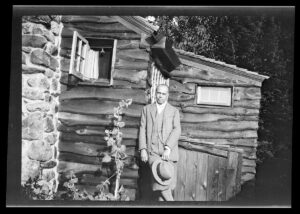 Rufus Jones reintroduced readers to James Weldon Johnson (1871-1938) in February. Johnson was “an author, professor, lawyer, diplomat, poet, songwriter, and civil rights activist; he remains a pivotal figure in American history and culture. In January 1900, he wrote the lyrics to Lift Every Voice and Sing for a celebration of President Abraham Lincoln’s ninety-first birthday. The song was put to music by his brother J. Rosamond Johnson (1873-1954), and it was first performed on February 12, 1900, by five hundred school children in Jacksonville, Florida. This would not be the only time Johnson’s work was to be associated with a president of the United States, as former Motown singer Kim Weston performed the song in January 2001 for President George W. Bush’s inauguration. In 2009 and again in 2013, President Barack Obama recited and sang Lift Every Voice and Sing as part of the inaugural celebrations. Most recently, in January [2021], for the inauguration of President Joseph Biden and Vice President Kamala Harris, the world listened to Johnson’s lyrics being recited as excerpts of Lift Every Voice and Sing were read during the Gift Giving Ceremony in the Capitol Rotunda…”
Rufus Jones reintroduced readers to James Weldon Johnson (1871-1938) in February. Johnson was “an author, professor, lawyer, diplomat, poet, songwriter, and civil rights activist; he remains a pivotal figure in American history and culture. In January 1900, he wrote the lyrics to Lift Every Voice and Sing for a celebration of President Abraham Lincoln’s ninety-first birthday. The song was put to music by his brother J. Rosamond Johnson (1873-1954), and it was first performed on February 12, 1900, by five hundred school children in Jacksonville, Florida. This would not be the only time Johnson’s work was to be associated with a president of the United States, as former Motown singer Kim Weston performed the song in January 2001 for President George W. Bush’s inauguration. In 2009 and again in 2013, President Barack Obama recited and sang Lift Every Voice and Sing as part of the inaugural celebrations. Most recently, in January [2021], for the inauguration of President Joseph Biden and Vice President Kamala Harris, the world listened to Johnson’s lyrics being recited as excerpts of Lift Every Voice and Sing were read during the Gift Giving Ceremony in the Capitol Rotunda…”
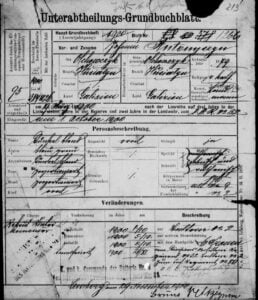 In March, James Heffernan offered Vita Brevis readers inspiration couched in a plea:
In March, James Heffernan offered Vita Brevis readers inspiration couched in a plea:
“Military records from Galicia (1865-1918) are today held by the Central State Historical Archives in Lviv, Ukraine… The average personnel record found in the collection includes the name of the individual, where he was born, and a brief summary of his service and rank. Occasionally, the record will also include the names of the parents. Jumping around in the collection, the records are most often written in German and Polish, but with some Ukrainian records also included. In addition to records from Galicia, I have also found several records for individuals born in the region of Bukovina, a territory today divided between Ukraine and Romania.
“The Austrian military was not segregated by religious group, so these records hold information for Protestant, Catholic, and Jewish men from Galicia. With many of the records of Galician Jewish communities no longer extant, military records have the potential to provide much-needed context and biographical detail. The catch, however, is that beyond their loose organization by surname, there is no unified index for the records. Locating a specific ancestor’s military record would be akin to finding the proverbial needle in a haystack.
“In scouring the web, I have found very little written about this collection and nothing to suggest it is being lined up for a large-scale transcription project. What a help if it were…”
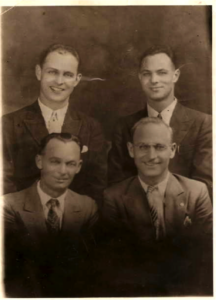 Jeff Record embarked on a round of “Genealogical Clue” in “‘Evan Evans with a candlestick’” in April. His mother was a child of divorce, with few memories of her father during her childhood:
Jeff Record embarked on a round of “Genealogical Clue” in “‘Evan Evans with a candlestick’” in April. His mother was a child of divorce, with few memories of her father during her childhood:
“She could recall only the smallest amount; a forlorn white cat who cried for her when she left for school, her parents’ friends Ray and Lola, rumors about her grandmother’s early death, and tales about an old stagecoach, but little more. Then, as if out of the blue, I remember my mother perking up. It was as if a beautiful memory of a time with her father had just landed at her doorstep. She said, ‘Well, I remember my dad taking me to Denver once to see “Uncle Evan.”’ Eureka! the eleven-year-old genealogist in me exclaimed. However small it was, I finally had a lead…
“Mom recalled a large house with a big bay window high up overlooking Denver. I guess mom would have been about six years old at the time she’d visited Evan, and it was a wonder she could recall this much – or, indeed, if any of her memories were true. (In fact, the house looks to have been quite small, the window of average size and overlooking a city park…) She sensed her father felt very close to Evan and that this visit, whatever it was, was one paid out of gratitude and respect. Mom recalled that Evan and his wife Grace were kind people, and treated her fairly, though it was evident even to a little girl that they had never had any children of their own. Whatever this was, whatever this memory of my mother and her dad was, this visit to Even Evans was foundational, important in some way. But just who the heck was Evan Evans?”
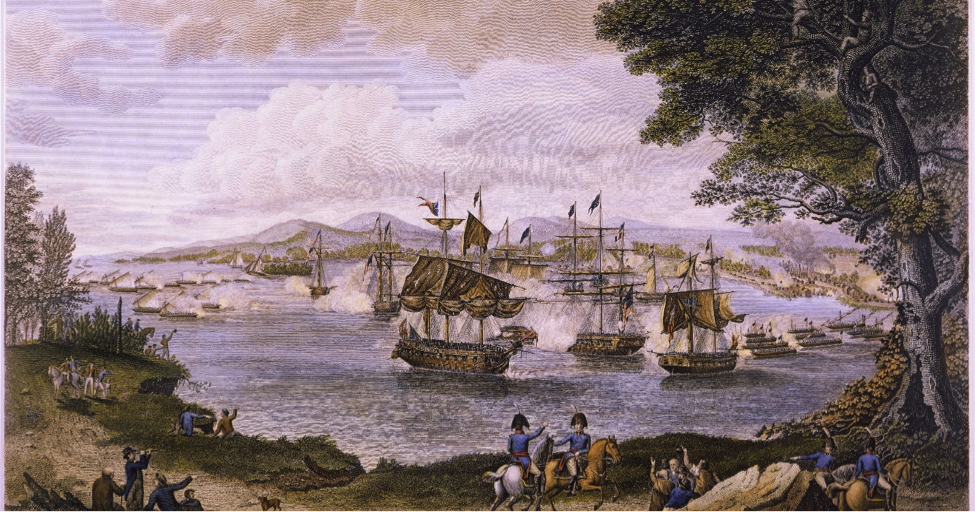 David Allen Lambert reflected on a forebear who fought, unexpectedly, in the War of 1812 in a post published in May:
David Allen Lambert reflected on a forebear who fought, unexpectedly, in the War of 1812 in a post published in May:
“I was intrigued that a forty-four-year-old man with a young family would have enlisted at his age. When I lecture on military records, I always stress the extreme age ranges of soldiers when they enlist. However, this time I failed to follow my own research advice! The record of his service was not with the Massachusetts State Militia but with the United States Army Light Artillery. Henry [Poor] enlisted 15 February 1814 at Newburyport (the record states January 15 or February 15), according to the online document from the database ‘U.S., Army, Register of Enlistments, 1798-1914’ on Ancestry.com.
“Besides now learning his height, I learned that he had grey hair and eyes and a fair complexion. Without a painting or photograph these descriptive facts would have been lost if he had not enlisted. The unit in which he served was under the command of Captain Francis Stribling. Henry’s military rank was that of an artificer. An artificer in the Light Artillery would assist with loading the cannons as well as repairing them. Henry was a carpenter and a cabinetmaker in civilian life. Were these skills put to use to repair the cannon carriages in battle? Henry was active in his unit when they participated in the Battle of Plattsburgh, also known as the Battle of Lake Champlain, 6-11 September 1814. This battle was the final British invasion of the northern region of the United States.”
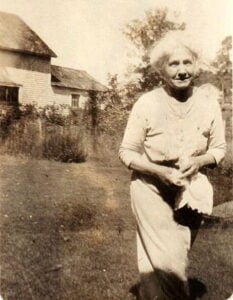 In June, Jennifer Shakshober found unexpected detail in the life of an ancestral aunt named Barbara:
In June, Jennifer Shakshober found unexpected detail in the life of an ancestral aunt named Barbara:
“…I had initially been interested in Barbara Shakshober as a key to my German origins. In high school, I contacted the New York City Municipal Archives to request her birth record, but no record was found. Yet the Gaul divorce file [from Vermont] reveals the significance of Barbara’s story in its own right: a nineteenth-century young woman born to immigrant parents, compelled to marry for the sake of her unborn child. It hints at the working woman she would become and the strength of her relationship with her only child, Ralph. Barbara passed her final years in the home of her youngest sister Sybilla Phillips, at whose home she died on 29 November 1934.”
Concluded here.
Share this:
About Scott C. Steward
Scott C. Steward has been NEHGS’ Editor-in-Chief since 2013. He is the author, co-author, or editor of genealogies of the Ayer, Le Roy, Lowell, Saltonstall, Thorndike, and Winthrop families. His articles have appeared in The New England Historical and Genealogical Register, NEXUS, New England Ancestors, American Ancestors, and The Pennsylvania Genealogical Magazine, and he has written book reviews for the Register, The New York Genealogical and Biographical Record, and the National Genealogical Society Quarterly.View all posts by Scott C. Steward →